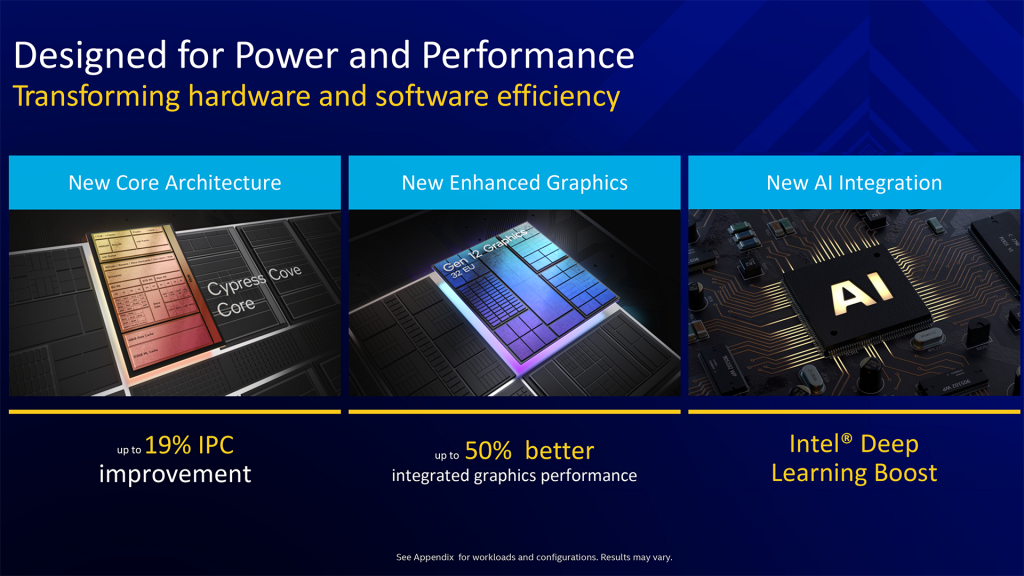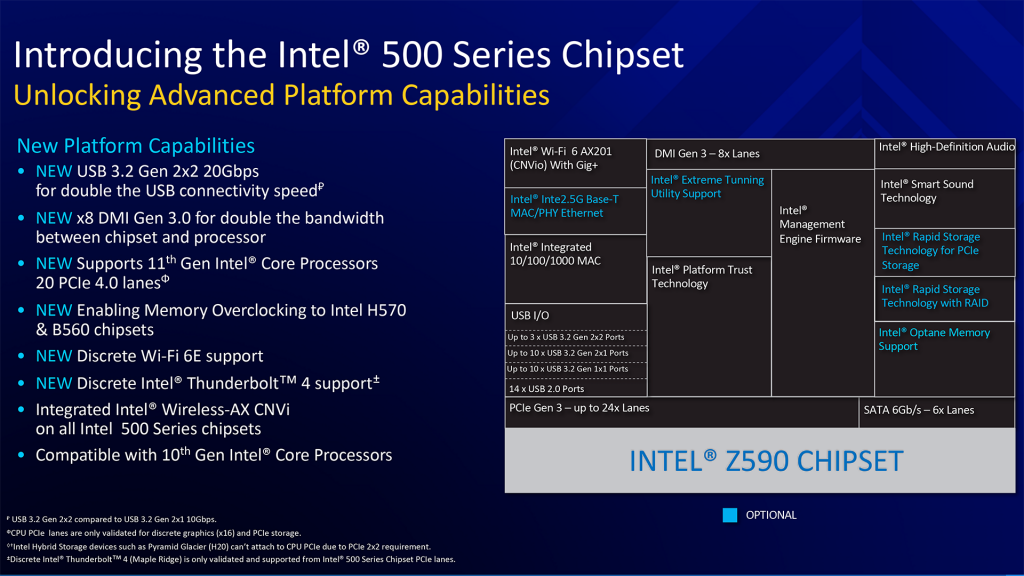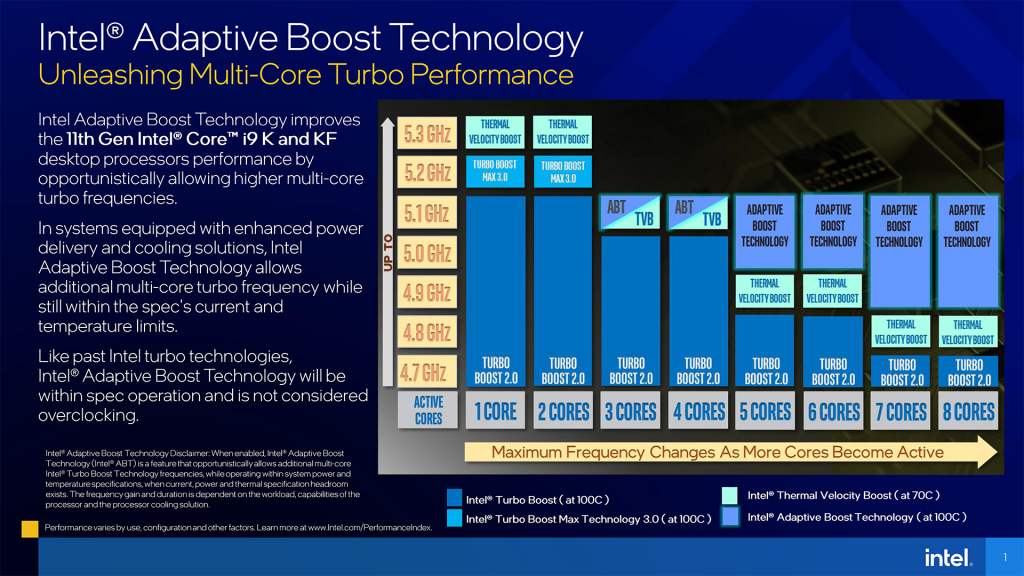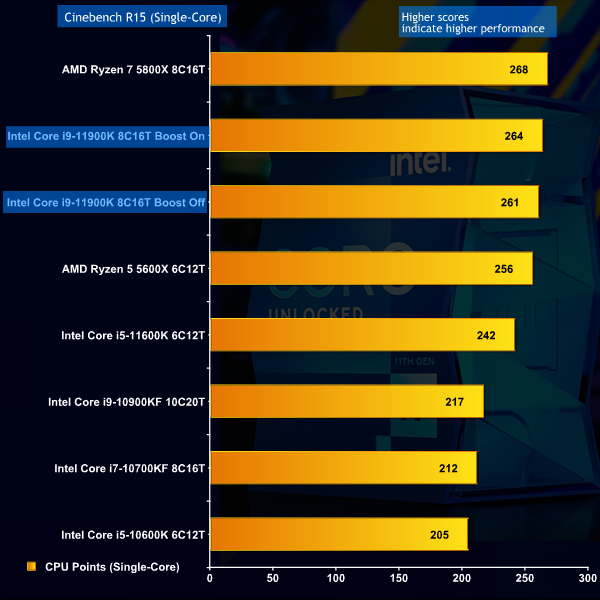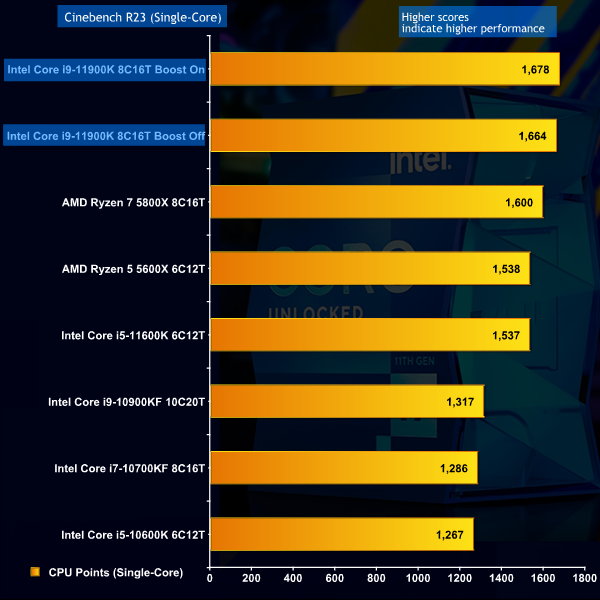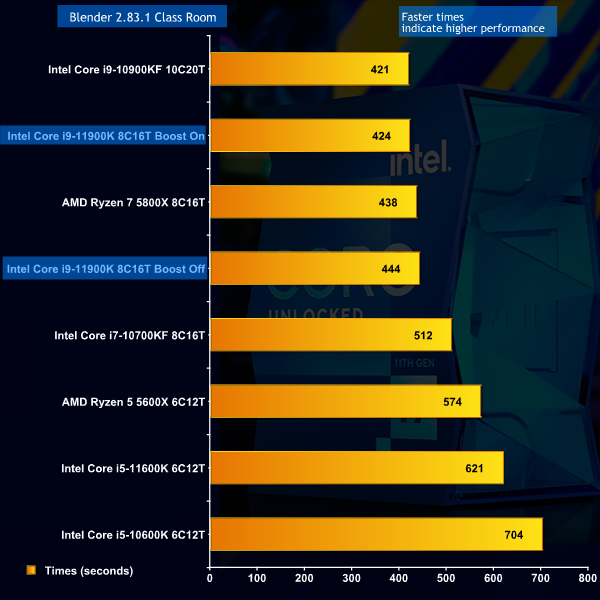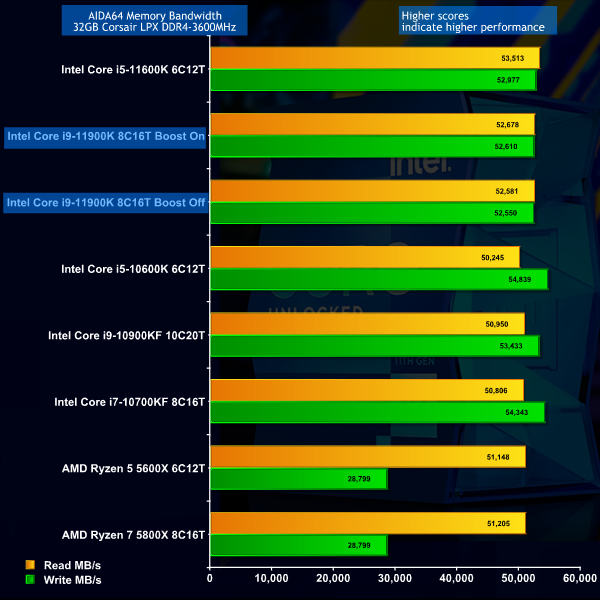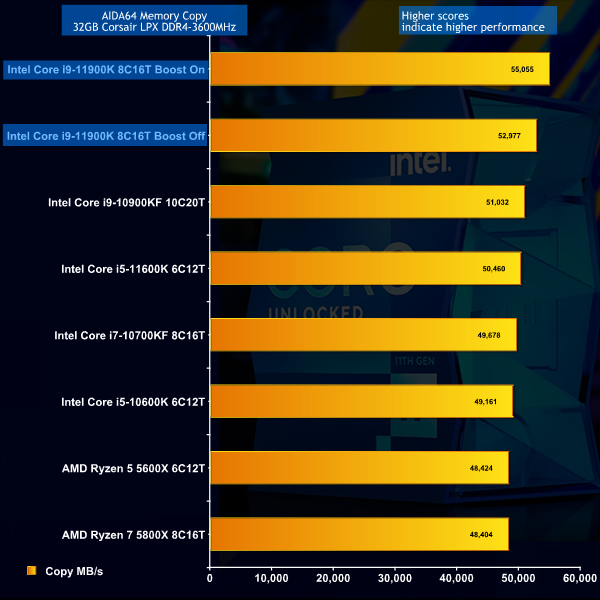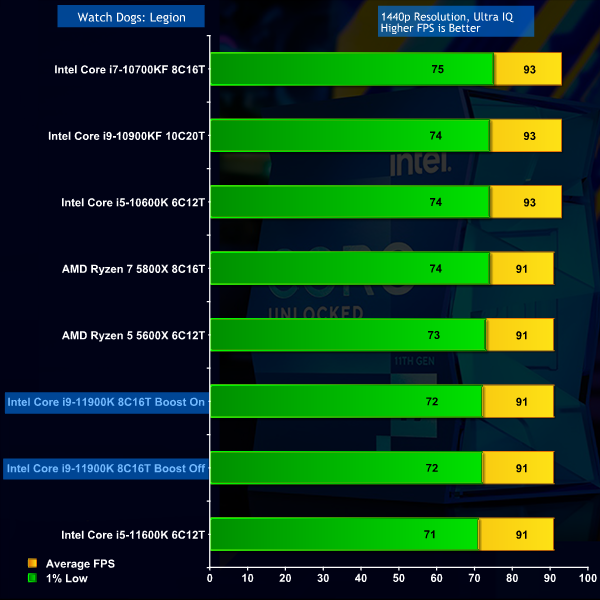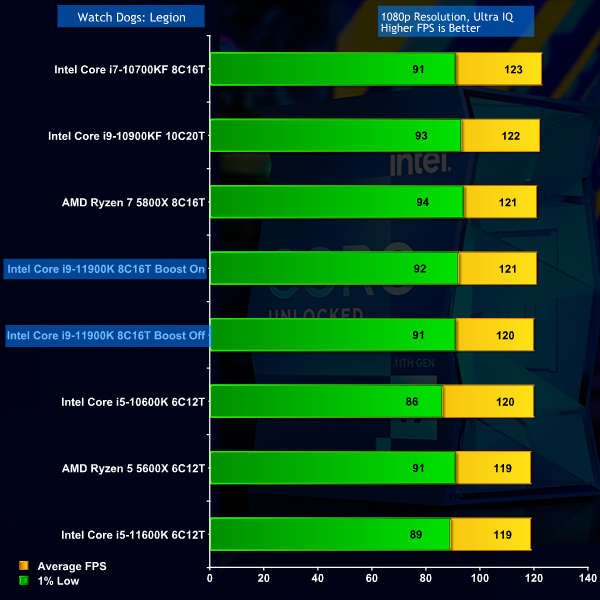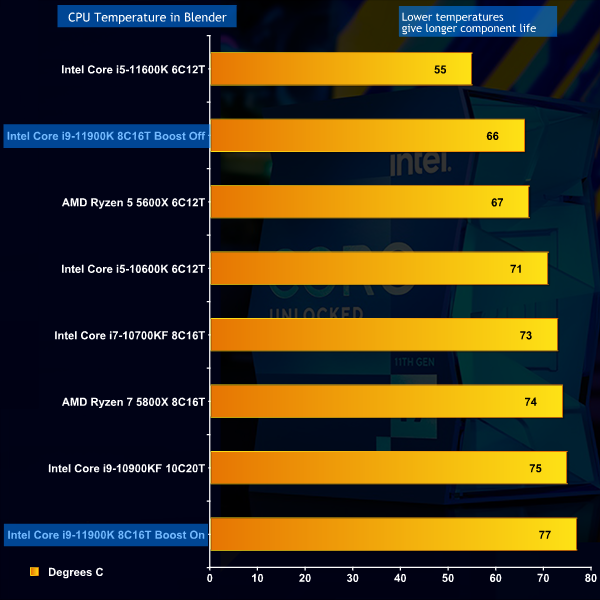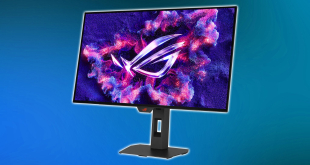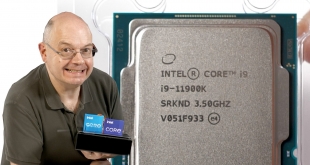
11th Gen Rocket Lake CPUs mark the first shift in architecture for Intel's desktop line-up since Skylake debuted all the way back in 2015. Here we the assess the flagship part, the 8-core and 16-thread Intel Core i9-11900K. We know this SKU offers two fewer cores than the i9-10900K, and we also know expectations for these processors have not been high since the first early reviews went live earlier this month.
Timestamps
- 00:00 Start
- 00:15 Summarising
- 03:03 A quick look at the system / Adaptive Boost
- 06:48 A bit of a mess really
- 08:55 A look at performance graphs
- 10:54 CPU Power Draw and Temperatures
- 11:43 Gaming Performance
- 12:45 Handbrake tests
- 13:17 Pricing discussion / woes
- 15:00 Should you use Adaptive Boost?
- 16:37 Why has Intel even bothered to launch Rocket Lake?
- 18:30 Adaptive boost has killed overclocking
Before diving into the meat of this review, we recommend you cast your eye over some previous content on Intel Rocket Lake, including Leo Says Ep. 58 and Leo Says Ep.59. That will lay the groundwork for this review, with discussion on what Rocket Lake is, Intel's Adaptive Boost technology, the Z590 chipset and more.
i9-11900K Specification:
- Socket: 1200
- Base Frequency: 3.50GHz
- Intel Smart Cache: 16M
- Cores / Threads: 8/16
- Memory speed support: 2933-3600MHz
- Intel Single Core Turbo frequency: 5.1GHz
- Intel Turbo Boost Max 3.0 Single core frequency: 5.2GHz
- Intel Thermal Velocity Boost single / all core turbo frequency: 4.8GHz – 5.3GHz
- Intel ALL core turbo frequency: 4.7GHz
- Max PCI-Express Lanes: 20
- PCI Gen 4.0 Support: YES
- Onboard Graphics: YES Intel UHD Graphics 750
- Integrated memory controller: Yes – Dual Channel
- TDP: 125W
- Intel SIPP: YES
- Intel vPro Technology: YES
- ISM: YES
- Intel Optane memory: YES
- Warranty: 3yr
Intel makes a number of bold claims for the technologies inside 11th Gen Rocket Lake.
We are currently unable to judge the value of Deep Learning Boost, however the claimed 19 percent increase in IPC is central to Rocket Lake as it means that Intel can justify the step back from ten cores to eight.
Another major change with Rocket Lake is the step up from PCIe Gen 3 to Gen 4 and in addition you now get 20 lanes of PCI Express from the CPU (Comet Lake-S has 16 lanes) that support both the graphics slot and also the primary M.2 storage drive.
The matching Z590 chipset, meanwhile, continues to support PCIe Gen 3 so while you get some tweaks to the USB support there are no dramatic changes in terms of features and hardware.
Having said that, the Z590 chipset does have one very interesting aspect as the combination of an 11th Gen Core i9 CPU with a Z590 motherboard means you can use Intel Adaptive Boost Technology to ramp up CPU clock speed dynamically.
We used four test systems to benchmark a selection of CPUs for this review. The only significant difference between the systems is that the test platform for 10th Gen Intel CPUs uses a PCIe Gen 3 SSD where the others have a Gen 4 Sabrent drive.
Intel Core i9-11900K test system:
CPU: Intel Core i9-11900K
Memory: 32GB Corsair LPX DDR4-3600MHz Dual Channel
Motherboard: Asus ROG Maximus XIII Hero WiFi BIOS 0610
CPU cooler: MSI MPG Core Liquid K360
Graphics: Sapphire RX 6800 XT 16GB
Storage: Sabrent Rocket 4.0 M.2 NVMe
Power Supply: Seasonic Prime Platinum 1300W
OS: Windows 10 Pro
Intel Core i5-11600K test system:
CPU: Intel Core i5-11600K
Memory: 32GB Corsair LPX DDR4-3600MHz Dual Channel
Motherboard: Gigabyte Z590 Aorus Master BIOS f5a
CPU cooler: MSI MPG Core Liquid K360
Graphics: Sapphire RX 6800 XT 16GB
Storage: Sabrent Rocket 4.0 M.2 NVMe
Power Supply: Seasonic Prime Platinum 1300W
OS: Windows 10 Pro
Intel 10th Gen test system:
CPUs: Intel Core i9-10900KF, Core i7-10700KF, Core i5-10600K
Memory: 32GB Corsair LPX DDR4-3600MHz Dual Channel
Motherboard: MSI MPG Z490 Gaming Carbon WiFi BIOS 1.70
CPU cooler: MSI MPG Core Liquid K360
Graphics: Sapphire RX 6800 XT 16GB
Storage: WD Blue M.2 NVMe
Power Supply: Seasonic Prime Platinum 1300W
OS: Windows 10 Pro
AMD Ryzen test system:
CPUs: AMD Ryzen 7 5800X and Ryzen 5 5600X
Memory: 32GB Corsair LPX DDR4-3600MHz Dual Channel
Motherboard: Asus TUF Gaming X570-Plus BIOS 3602
CPU cooler: MSI MPG Core Liquid K360
Graphics: Sapphire RX 6800 XT 16GB
Storage: Sabrent Rocket 4.0 M.2 NVMe
Power Supply: Seasonic Prime Platinum 1300W
OS: Windows 10 Pro
Cinebench R15 and R23 Testing
Cinebench R15 and R23 Overview
Single core performance is decent for Rocket Lake, which suggests the claims about increased IPC have some merit. Balanced against that we see the 10-core Comet Lake-S and 8-core Ryzen 7 5800X deliver some serious performance in the multi-core tests.
3D Mark, 7-Zip and Handbrake
3D Mark, 7-Zip and Handbrake Overview
In these tests we see a consistent picture emerging where both Ryzen 7 5800X and Core i9-10900KF take the fight to Core i9-11900K. It helps Rocket Lake to have the extra performance of Adaptive Boost, but the difference it makes is marginal.
Blender and AIDA64
In Blender we see that Core i9-11900K running at 5.0GHz performs at a similar level to Core i9-10900KF at 4.9GHz. Nonetheless, it clear the move to eight cores has hurt Rocket Lake Core i9.
AIDA64 memory tests demonstrate that Core i9-11900K performs at a slightly higher level than Core i9-10900KF with our chosen Corsair Vengeance LPX DDR4-3600MHz RAM.
Blender and AIDA64 Overview
Core i9-11900K delivers decent performance in these tests but it is hard to spot the stellar increase we hoped to see from the new Cypress Cove cores.
Game Tests at 1440p and 1080p
Game Tests at 1440p and 1080p Overview
We included testing at 4K in our video but removed those graphs from this page as it was clear the graphics card was the limiting factor and we want to look closely at the CPU in this review. In Deus Ex: Mankind Divided and Far Cry 5 New Dawn the Core i9-11900K romps to the top of the chart. It is a slightly different story with Watch Dogs: Legion where the scores are very evenly spread across all the CPUs but the takeaway here is that Rocket Lake is a great choice for gamers.
Power Consumption and Heat
Power Consumption and Heat Overview
Last year we were amazed at the power draw of Intel's Core i9-10900K as it seemed to wholly ignore the nominal TDP and simply shoot for the moon. Here we have eight cores of brand new Rocket Lake drawing 90 percent of the power required by the ten core Core i9-10900KF. That figure looks bad and while it allows Intel to deliver decent clock speeds, it raises a serious question about the efficiency of the architecture inside Rocket Lake.
The real jaw-dropper comes when you enable Adaptive Boost and watch the all-core speed push to 5.0GHz or 5.1GHz. The bad news is the five or six percent increase in clock speed requires 25 percent more power. These figures suggest that Intel has felt obliged to push way beyond the point of efficiency in a desperate scramble for clock speed and performance.
There is a glimmer of good news as our MSI MPG Core Liquid K360 was able to cool the Core i9-11900K fairly easily, albeit with brute force fan speed. Intel's Soldered TIM is clearly continuing to work well inside Rocket Lake.
Intel Rocket Lake promised an end-to-end overhaul of the familiar Skylake architecture with just one small hitch as Intel continues to be stuck on a 14nm process and are unable to progress to 10nm.
We have known that for quite some time and consider it one point to be factored into a complicated puzzle. Intel has new Cypress Cove cores, the addition of PCI Express Gen 4, the introduction of Xe graphics on the desktop and also the new Z590 chipset. Taken together that looks like an impressive collection of features, however the 14nm fabrication process looms large and raises some big questions.
During our testing it became clear that Intel Adaptive Boost Technology was cooked up to give Core i9 Rocket Lake enough grunt to compete with the Comet Lake-S Core i9. In addition it delivers a feature that can ‘only' be supplied by Z590 and hence gives you an incentive to spend a hefty amount of money on a high end motherboard. We see what you did there Asus!
The downside to ABT is that Core i9-11900K jumps from drawing a lot of power and instead demands a huge amount of power. While the performance is decent, it is hard at times to reconcile the numbers with an 8-core processor. We can only imagine how Ice Lake-S would have performed if Intel had been able to deliver 10nm but that train departed a long time ago and we have to deal with the Rock Lake that is sat in front of us.
The performance is decent but does not deliver the levels that we expected – heck, that we were promised – but there is little doubt that Intel still has the ability to deliver CPUs that cater for gamers. Our tests results are very good in that respect.
Where things finally go off the rails is that Intel hoped to sell Core i9-11900K for £500 and it is currently listed at £560. The problem is that Intel has to compete with AMD Ryzen 7 5800X and that means the desired price is closer to £400. Take those point together and it is clear that Intel's new Core i9 has some major problems to overcome.
The i9-11900K is open for pre-order from Overclockers UK, priced at £559.99 HERE.
Discuss on our Facebook page HERE.
Pros
- Core i9-11900K plus Z590 plus Adaptive Boost equals 5.1GHz on all cores
- Intel finally supports PCIe Gen 4 on the desktop.
Cons
- Power draw is too high.
- Cutting back to eight cores has hurt Rocket Lake.
- The confusion with Adaptive Boost looks like an own goal.
- The hassle with PCIe Gen 4 makes us wish Intel had gone with a new socket.
- UK pricing for Core i9-11900K gives AMD Ryzen 7 an easy win.
KitGuru says: Rocket Lake has been hamstrung by 14nm and the power draw is awful to behold.
 KitGuru KitGuru.net – Tech News | Hardware News | Hardware Reviews | IOS | Mobile | Gaming | Graphics Cards
KitGuru KitGuru.net – Tech News | Hardware News | Hardware Reviews | IOS | Mobile | Gaming | Graphics Cards


